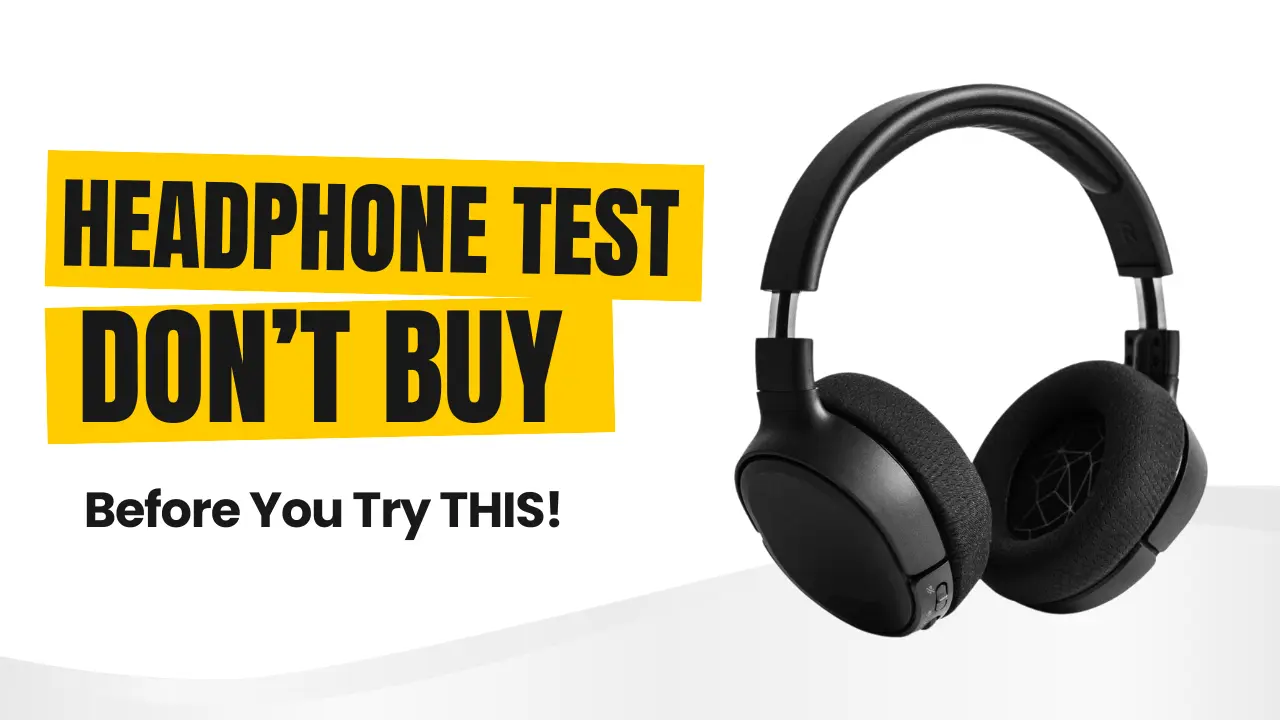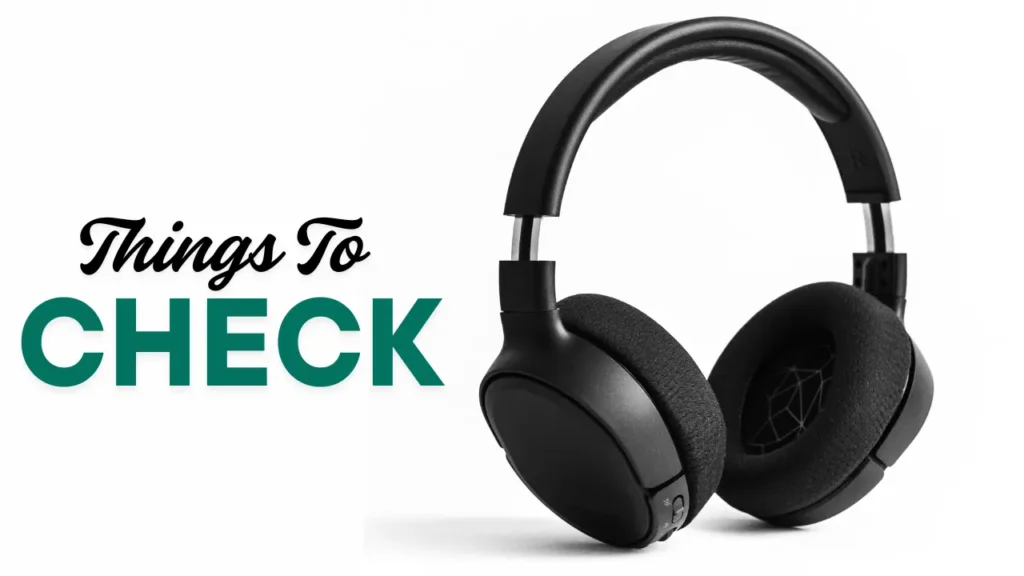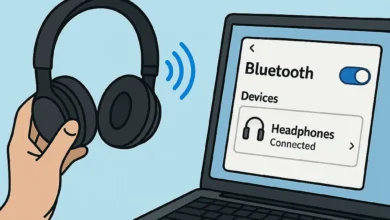New Headphones? Don’t Hit ‘Buy’ Before Reading THIS!

Getting a new pair of headphones feels like getting a new gift. At the same time, there is the possibility of wearing them out in the future. It is very uncertain how they will hold up in the long term, and what suits someone’s preference out there may not suit yours. Assessing the headphones carefully before deciding to buy them is fundamental if you want to make sure that the sound and quality are the best possible. The instructions that follow aim to guide the user through the right process of assessing the headphones.
Headphone’s outer parts evaluation
There are a couple of external aspects to consider the headphones that are crucial to check before putting them on, which can help determine their quality.
You may like: The Best IEMs Under 100
Headphone case
Important attention starts with the box the headphones arrive in. The PowerPoint display should be exhibited with attention, as it contains the most basic information required to decipher if the package is official or just another cheap imitation. And More information, such as does the packaging looks sleek. Does it suggest that an expensive and supreme item is found inside?
The same goes for presentation, as shown by Noble Audio FoKus Apollo, which decisively goes a step ahead of its competition. The headphones paired with the accessories are put in a hard case, and the entire package is elegant and sleek. At a mere glance, it gives away a good confidence in how the product was handled. Such displays matter a lot, especially for audiology companies that want to portray carefulness and professionalism in their industry.
Accessories
We all have a distinct picture in our heads about what headphones come with (accessories) when we make a purchase. For example, a high-quality pair of TWS (True Wireless Stereo) headphones should, at a minimum, have three pairs of ear tips of assorted sizes, a charging cable, and an instruction manual. Noble Audio is one of those brands that goes to the extreme of including some extra tip bags or even a branded case for the headphones. These thoughtful extras improve user experience and enhance overall satisfaction whilst demonstrating their attention to detail.
Build Quality
As a first step for appreciating the new headphones, you should see/full-size headphones be exposed to some carefully constructed casual wearing. For earbuds, make sure that the headband section is adjustable and can lock tightly. Check if the plastic parts used to manufacture the headband and the ear cups are secure. Some companies, like Beyerdynamic, are very keen on the quality of their products and will use high-grade spring steel for their headbands. This ensures that the product lasts a long time. When it comes to top-tier users of great quality, Dan Clark Audio is very well known for its strong and dependable parts that are guaranteed to withstand harsh conditions for a long time.

Comfortable Fit
Whether you choose to go with either in-ear or full-size headphones, comfort is important, especially for lengthy periods of listening. Consider the tip ear’s fit (for in-ear) and the headband and ear cushions( for full-size). Features such as adjustable headbands and ergonomic ear cups have a profound impact. For instance, Bowers & Wilkins Px8 headphones are popular for their memory foam ear cushions that conform to one’s head for soft comfort over time.
Headphone Sound Test
A headphone sound test is one of the most important processes of checking the new headphones. As an example, here’s an outline of evaluating sound quality concerning its frequency range.
Sub-Bass (20Hz-60Hz)
This is the lowest range of the frequency scale, which is more of a feeling than hearing. To try these ranges, use a few songs with deep bass. The bass should come in smoothly, be crisp, and have a strong presence without distortion or muddling.
Common problems to avoid: Fuzzy or muddy bass without definition.
Bass (60Hz-250Hz)
The bass range is an important part of the music that adds depth, so it must be tight and controlled. It should never overpower the other frequencies. Tracks with prominent bass are effective in testing how well the headphones balance bass and midrange or treble.
Common issues to watch for: Booming, slow, and rattling bass that drowns out other frequencies.
Middle Frequencies (250Hz-2000Hz)
Midrange encompasses the body of music, which contains vocals and most of the accompanying instruments. Mid-range is an important area of clarity and balance. A well-represented midrange will make the music fuller and richer.
Common issues to watch for: Harshness, an unnatural sound, or overpowering low frequencies dominating the midrange.
High mid frequencies (2000Hz-6300)
High mids add clarity to instruments and vocals while softening the impact of high-frequency details. They should be clear and detailed and should add to the texture of the sound.
Common issues to watch for: Sharpness and unpleasant whistling noises.
High frequencies (6300- 20 kHz)
These frequencies add extra detail without causing ear fatigue. They are responsible for the highest notes of a piece of music.
Common issues to watch for: distortion, muddiness in the high ends, and shrillness.
Balance
A headphone of good quality should have all frequency ranges balanced. An imbalance will cause the sound to be uneven.
Common issues to watch for: Bass dominating the mids or Treble becoming piercingly excessive.
Soundstage
Soundstage is the spatial perception ability of the headphones. The perception of quality headphones is so good that the position of the instruments in the mix can be recognized.
Common issues to watch for: Muddiness, in which the placement of the instruments cannot be identified.
Dynamic Range
This attribute designates the gap between the minimum and maximum volume levels that headphones can reproduce without distortion. Dynamic range controls accuracy, making sure subtle sounds and powerful peaks are portrayed correctly.
Common issues to watch for: Distortion at increased volumes or missing quiet details in the music.
Noise Isolation and Active Noise Cancellation Test
If you are using headphones for travelling and other noisy settings, consider testing passive isolation and active noise cancelling (ANC).
Passive Noise Isolation
This is the Level of external sound that can be filtered or masked by other audible sounds from the headphones. If using in-ear headphones, make sure the ear tips are the correct size and the material used is capable of forming a good seal. If using over-ear types, check that the ear cups comfortably enclose your ears and form a seal, which aids in the reduction of background sounds.
Active Noise Cancellation Test
After testing the passive isolation, switch on the ANC function (if equipped) and conduct the test again. A good quality ANC feature should effectively block background noise and effortlessly preserve the sound of the music.
Cable And Connectivity Check (For Wired Models)
Checking the cable of the headphones is one of the most critical steps to take if you are buying wired headphones.
No visible damage: Look also at the cable for scratches or scuff marks because they, too, scratch or even dent the performance of the wire.
No static or interruptions: With the wire gently flexed at its midsection, listening to the speakers, check through the test he will be getting.
Secure connectors: Make sure the wire is securely connected to the headphones and the jack to the headphones to prevent any wiggling.
Headphone Tester
The Headphone Tester tool helps with sound testing by isolating problems such as speaker imbalance, left or right. It helps you tune in to certain speakers so that you can diagnose problems with specific drivers.
For instance, below is a sample of the Headphone Tester that you can use to assess your headphones before making a purchase.
The tester helps you:
- Test the left and right speakers separately.
- Confirm that each speaker is reproducing the desired sounds and not distorted.
- Confirm that the balance between both channels is correct.
Most Common Questions
At what volume level should I test my headphones? We suggest setting the volume to medium so that your ears are not in danger when testing headphones. If you want to verify if there is distortion, you can turn it up briefly, but for sustaining comfort, it should be at a moderate level.
Can software assist in checking sound quality? Analyzing frequency response along with dynamic range and other features of sound through headphones can be done with some available apps and software.
What is the difference between open and closed headphones when testing sound? Compared to closed headphones, which emphasize sound isolation to differing degrees, thus affecting sound perception, open headphones typically offer a wider soundstage and more natural-sounding audio.
Is sound quality affected by the lack of wires? With the recent upgrades in Bluetooth technology and codecs, wireless connections do not significantly hinder sound quality. Nevertheless, higher-quality codecs like aptX and LDAC are useful in preserving sound integrity.
Final thoughts
Choosing a headset goes beyond its brand name, first impressions, or audio reputation. Assessing the construction, comfort, audio performance, and active noise cancellation, alongside many more features, as evaluated in this guide, helps. Make sure both speakers are functioning with the Headphone Tester and enjoy a balanced listening experience. Happy listening!


